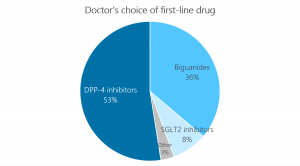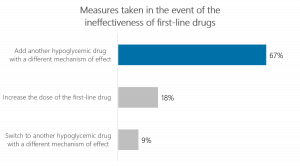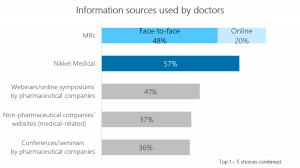Classification of Physicians by Oral Hypoglycemic Drug Usage
Nikkei Research conducted a survey of 1,010 Japanese physicians. The study focused on prescription of certain drugs and physician classification.
TOKYO, JAPAN, June 15, 2022 /EINPresswire.com/ -- In March this year, Nikkei Research conducted a survey that collected responses from a total of 1,010 Japanese physicians. The doctors were randomly selected registered Nikkei Online Medical members who were currently practicing either (i) general internal medicine or (ii) in medical fields related to diabetes, metabolism, and/or endocrinology.The study focused on the doctors’ prescription of oral hypoglycemic drugs, unveiling treatment status and reasons for prescribing such medicaments. In addition, we asked about their information sources and contact points with pharmaceutical companies, and we created profiles for the classification of doctors in further analysis.
(Chart1)
Among the eight types of oral hypoglycemic drugs available in Japan today, DPP-4 inhibitors were the doctors’ top choice for their first-line drugs. Biguanides and SGLT2 inhibitors were in second and third places, respectively. Five other types of oral hypoglycemic drugs combined accounted for only three percent.
(Chart2)
In the event of the ineffectiveness of their selected first-line drug, the next most commonly taken measure was to “add another hypoglycemic drug with a different mechanism of effect,” accounting for just shy of 70% of responses. Alternative measures included to “increase the dose of the first-line drug” and to “switch to another hypoglycemic drug with a different mechanism of effect.”
(Chart3)
Looking at information sources used by respondents, MRs (Medical Representatives), counting both face-to-face and online communication, reached nearly 70% of all respondents with regard to diabetes treatment. Nikkei Medical, a healthcare-industry-focused online membership site, followed at about 60%. Webinars or conferences held by pharmaceutical companies and websites of non-pharmaceutical companies each accounted for 40%.
Nikkei Research used its proprietary analytic tool, Key Explorer, to classify doctors based on their choice of first-line drugs. The characteristics of each type – “personas” – were derived from survey data; more specifically, (a) a profile, (b) attitudes and behaviors toward treatment, and (c) information sources were topics of focus. From those personas, we are able to learn more about what information is valued and physicians want it to be delivered, leading to insights for better communication approaches.
Public Relations Office
Nikkei Inc.
pr@nex.nikkei.co.jp
Visit us on social media:
Facebook
Twitter
LinkedIn
Other
Legal Disclaimer:
EIN Presswire provides this news content "as is" without warranty of any kind. We do not accept any responsibility or liability for the accuracy, content, images, videos, licenses, completeness, legality, or reliability of the information contained in this article. If you have any complaints or copyright issues related to this article, kindly contact the author above.



